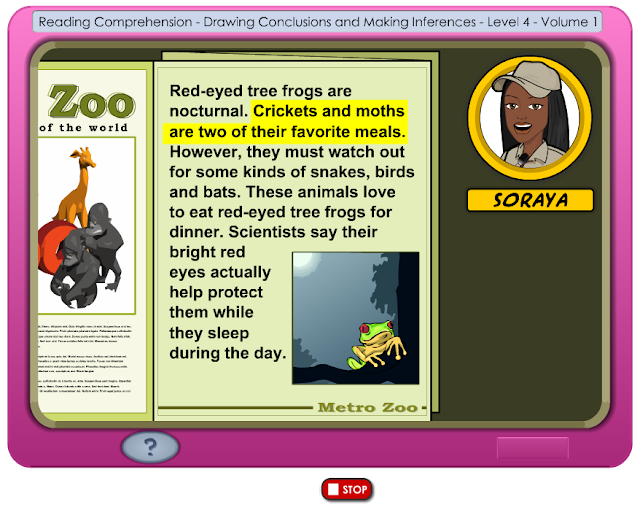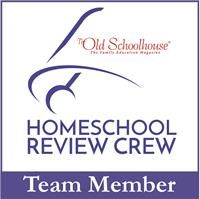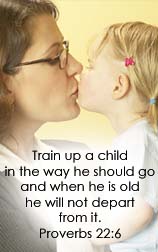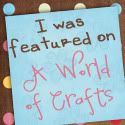My children love being able to get computer time in every day. And mommy loves finding new educational sites for them to try out, because when they are on the computer, they are supposed to be learning something before they can have a chance to "play." When the opportunity arose to try out K5 Learning, I jumped at the chance, because it was a site they could all use. Thanks to the Homeschool Review Crew, we were given a 6 month subscription to their online program, with the chance to have up to four student accounts. Perfect.
What exactly is K5 Learning?
Well, K5 Learning is an online educational program which allows a child to work on their reading, math, and spelling. It is not a full curriculum. Instead it is a supplemental program that can be used by homeschool or public school children. While we received a 6 month subscription, subscriptions are usually sold on a monthly or annual basis.
After taking assessments in reading and math, the child will be given lessons that are supposed to fit the level they were assessed at. Or, a parent can assign lessons through their parent account. The child can choose whether they want to do math, reading, or spelling; however, they have no control beyond that. The program assigns what it feels the child should be working on, and then progresses as the child works on the lessons. In addition to the online portion of the program, there are worksheets that are generated which correspond to the lessons being learned. These give the child a chance to practice the concepts, which I really appreciate.
After taking assessments in reading and math, the child will be given lessons that are supposed to fit the level they were assessed at. Or, a parent can assign lessons through their parent account. The child can choose whether they want to do math, reading, or spelling; however, they have no control beyond that. The program assigns what it feels the child should be working on, and then progresses as the child works on the lessons. In addition to the online portion of the program, there are worksheets that are generated which correspond to the lessons being learned. These give the child a chance to practice the concepts, which I really appreciate.
Okay, that was a quick overview of the program. Let's take a look at things in more detail.
The first thing I had to do was set up a Parent Account. Then I set up Student Accounts for each of the children. The children can now log into their accounts. As I mentioned, the student starts the program by first taking assessments, which take around 30-45 minutes. This helps the program decide what level the child will be working at. There are several different categories that are assessed in both reading and math. Reading assesses Phonics, Phonemic Awareness, Sight Words, Vocabulary, and Reading Comprehension. Math assesses Numbers & Operations, Measurement, and Geometry. Once the assessments are completed, an email is sent with the results. More detailed results are available on the parent account by clicking "View Reports" under each child's information.
These reports are quite informative. Here let's take a look at Tabitha's reports, so you can see what I am referring to.
The Reading Assessment shows that Tabitha's Overall Reading Score is above the 4th grade range, and her Phonics is in the mastery range. The little chart at the bottom tells me that she is exempt from any Phonemic Awareness, Phonics, and Sight Word instruction because she scored at the highest level. In Vocabulary and Reading Comprehension she was placed above grade level.
The Math Assessment shows that her Overall Math Score is within the 4th grade range. From the chart on the bottom, I could see she might be struggling in Measurement, but was above grade level for Numbers & Operations and Geometry.
Each of the children scored pretty well on these assessments. However, my concern with them is, I knew there were things the children knew, but ended up being assessed low, like Amelia in her Phonics section. She only scored at a high 2nd grade level and was getting lessons that were way too easy for her. Even Tabitha, due to her Measurement score, was doing math that was really too basic for her. This is because they answered something wrong on the assessment. Due to this, the children resisted using K5 Learning at first. They knew they had to do it, but they were bored. Then I discovered that I could create assignments myself from my parent dashboard.
A Lesson Library is available for Reading and Math. The parent can choose the grade level to be used.
The problem with this feature is that beyond the topic, you really can't tell what the lessons are going to be about. So, I still wasn't sure if I was assigning work that would be too easy. On the page that appeared when I clicked "Create Assignment" it does say that we, as parents, don't have to create assignments because the program has set up lessons based on the assessments. It does suggest times at which creating assignments could be beneficial, such as when parents may want a child to redo a lesson they struggled with or doing all the lessons from a certain assignment instead of using the preset lessons.
As it turned out, the lessons I assigned weren't really what the children needed. So, I contacted the company. Thankfully, they are very willing to help you figure out what level your child needs to be working at. I was sent two pdf charts to peruse, which showed the different Math and Reading levels and what subject matter is covered in each grade. The grades are further broken down to "Early, Mid, and Late," and each of the categories tested in the assessment show the subject matter taught at each level. I ended up asking them to keep the children at the levels they were at if they were on grade level or ahead, and just bringing them up to grade level if they tested behind. This seemed to work as the children are a lot happier with their computer time. I don't keep hearing "This is boring!" anymore.
I usually have the children work in both math and reading when they have their computer time, though sometimes they may only do one or the other. Let's take a look at what the program looks like for the child.
When a child logs in, they will come to their own dashboard.
They have the option to go to the Reading & Math section or the Spelling section. The children love that there is a different riddle every time they log in. They love trying to figure it out themselves and then trying to stump the family. I have to say, I'm usually stumped. At the bottom of the screen the child will see the recommended worksheets that correspond to the last lesson they were working on. Personally, I don't allow the children to print things off of the internet, so I am the one who gets on their account and decides which worksheet I want them to work on, if any.
Once they click on Reading or Math lesson, a new window will open with the lesson. Here is a recent lesson that Tabitha was working on.
When they click on a math assignment, they are shown what the topic of the lesson will be, the learning objectives, and possibly keywords (usually in the higher grades from what I have noticed). Sometimes the lesson will open automatically, and sometimes the student needs to click "Next." From what I have been able to tell, there really isn't a lot of instruction at first. There is usually some animated lesson that the child is answering questions in. If they get it right, they move on, if their answer is incorrect, they try again. After the second incorrect answer, the computer provides the answer. Tabitha has been working with multiplication and division problems recently, and there really isn't any animation to her lessons. She just receives problems and is told to solve them. I'm assuming this is because she is in a higher grade and doesn't really need animation.
The problem the children are running into, is the program will start giving these problems without first explaining how to solve them. For instance, the following was thrown at Tabitha, and she was in tears because it hadn't explained what she was supposed to be doing.
I actually wasn't sure what they were looking for either, at first. She was able to click on the book icon at the bottom of the screen, and it explained different properties of multiplication, but she still wasn't sure how to work it out. What frustrated her even more was the fact that they expected her to work quickly. In this instance, if she didn't have the answer typed in within a certain amount of time it provided the answer for her. This meant she got that one wrong, even if she had figured it out. Fortunately, after it went through all the problems, it gave a bit of instruction on what she should be doing. We couldn't understand why they didn't teach it first. The only thing I could figure was that it was assessing if she knew the information. But to her, it just caused tears. I think if she hadn't felt rushed, she wouldn't have been so stressed, which would have allowed her to work it out.
I will say, I do like that they teach different methods for working out multiplication, though at first some of the methods had me scratching my head.
After multiplication, Tabitha started working on division. And now has moved into division with two-digit divisors. Unfortunately, this has again stressed her out, because she is still trying to figure out single-digit divisors. I'm going to look into assigning her lessons in division, to see if I can get her some more practice.
In Reading she is working on Reading Comprehension and Vocabulary. With Reading Comprehension they give a passage for her to read, and then she needs to answer questions. She has also been working on cause and effect. With Vocabulary she is given a word, taught how to pronounce it, is given the definition, and plays a "game" where she needs to give the proper definition for the word in the sentence.
Amelia has had similar Reading assignments, but at her grade level. She has also been working on sight words. Here are a few screen shots showing her work:
In Math, Amelia is working on liquid measurement and numbers over a million.
Hannah has worked her way up to diphthongs in phonics. She started out working on beginning vowels, which was in Level 1, but after we changed the levels, she moved up to the more appropriate Level 2 Phonics which had her working with R-Controlled vowels and digraphs. She is doing wonderfully with these lessons. Here is a sample screenshot of one of her games.
And here is one of her recent Vocabulary assignments. The sentence is read to her, and then she chooses the correct vocabulary word from the drop down menu.
In Math she was working on graphing and statistics for a while, then odd and even numbers, and now she is working on addition and subtraction.
Harold has mainly been working in the Reading section. He has had lessons in Phonemic Awareness, Phonics (working with consonant sounds), Sight Words (which his progress info shows that he is struggling with, but I think it might be because he walks away from the computer and there is no way to pause the lesson), Reading Comprehension (learning about sequencing and main ideas), and Vocabulary.
In Math he has worked on counting, counting backwards, ordinal numbers, and composing & decomposing numbers.
It took us a while to figure out when a lesson was actually finished for the session. When they are done with each little section, they will see the following screen where they can choose whether they should go on or stop.
If it wasn't really the end of that days lesson, sometimes they find they are redoing a lesson or skipping to a different lesson than what they were on. We finally discovered that it will say "Congratulations! You have finished the lesson" if it is the actual end of the lesson. To me, if this screen appears, that should mean they are done and won't have to do the lesson again.
The children haven't really been using K5 Learning for their Spelling as the older girls have their own spelling curriculum they are working through, and I haven't really been working with spelling with the younger children. That said, I did have them try it out a time or two.
When the child clicks on Spelling, a new tab opens up and they see a screen where they choose Spelling or Vocabulary Tutor. They can also choose how many words they want to work on, with ten being the smallest amount. Then they see the following screen:
They hear the word and can click on "hear word" to hear it again if needed. The definition is written out, which is helpful to the older girls, but younger children would possibly need parental help to read the definition. And example sentence is given, and if you click on the camera, you can see a picture of what the word is describing. After typing in the word, the child is to click submit to see if they spelled it correctly. If it is incorrect, the program will show some of the letters and have them try again. If they still don't get it correct, the answer will be given and the child will have a chance to practice it and hear it spelled.
I'm not actually sure how I feel about the Spelling section, as the words seem so random. For instance, when I tried it out, the words given went from "board" to "building" to "doctor." I very much prefer when spelling word lists make follow some sort of logical order.
Let's move on from the online portion and take a quick look at the worksheets.
Once a child has worked on a new lesson, new corresponding worksheets will be generated. Sometimes I have the children work on them, other times I feel they have mastered the work enough to not worry about it. Or, if I need something for them to do to keep them busy, I may just print them out anyway. And when I had my surgery, I was able to print out worksheets to give them something to do.
Here are some of the math worksheets they have worked on recently.
I noticed that Amelia was struggling with syllables, so I made sure to print out the worksheets so she could practice.
And I thought Harold would have fun working on some phonics worksheets.
Sometimes the worksheets need to be worked on with a parent, like when Hannah had some cause and effect worksheets, so we don't get to those as much as I would like.
As you can see, there is a lot to K5 Learning. The children have a variety of lessons they are working through. They never know exactly what they will be working on from day to day, but they can look back on their progress (using the Progress button on their dashboard screen) to see what they have done and how much they have learned. In fact, though these lessons seem to come at them randomly, when you look back on them, you can see the logic in the order. As a parent, I also have access to their progress reports on my Parent Account. I can see the dates they worked on each lesson, their scores, and their overall average in each category. Though I don't really keep grades for the children at this age, these will be great to add with our portfolio that goes to our evaluator.
I have to say, I would love to see the ability for the children to take an assessment more than once. Such as after they have used the program for a month, or maybe every couple of months, just to see how they are progressing. The only problem is, as I found out when I wasn't happy with their placements, if a child retakes the assessment they lose all the work they have done, and their account is reset.
Even though we have had some frustrations with K5 Learning, I think we are finally getting into a groove with it. I didn't realize at first that I could assign additional assignments if the children were struggling with concepts. So, I am going to look into that a bit more.
All in all, this is a pretty good program, though there are definitely some things I feel need improvement.
Don't forget to click the banner below to see what my fellow Crew Mates had to say about K5 Learning.



























































![[PREMIO2009.png]](https://blogger.googleusercontent.com/img/b/R29vZ2xl/AVvXsEjXD_Gx-wZ9EM5hXKrEYLksEBkYfRQtmb8VDVTDG_yyLggQoFIstZsh4zszdG20KqErZicRzEhiNYLty7j3IMXJYsABqkXjr8pp-ncj71xCbpxlXGbGpZq2fTuDQqq1RMKV4DPcDBnBViA/s1600/PREMIO2009.png)




No comments:
Post a Comment
Thank you for visiting my blog today. I love to read your comments, so please leave me one if you have the time.
Blessings